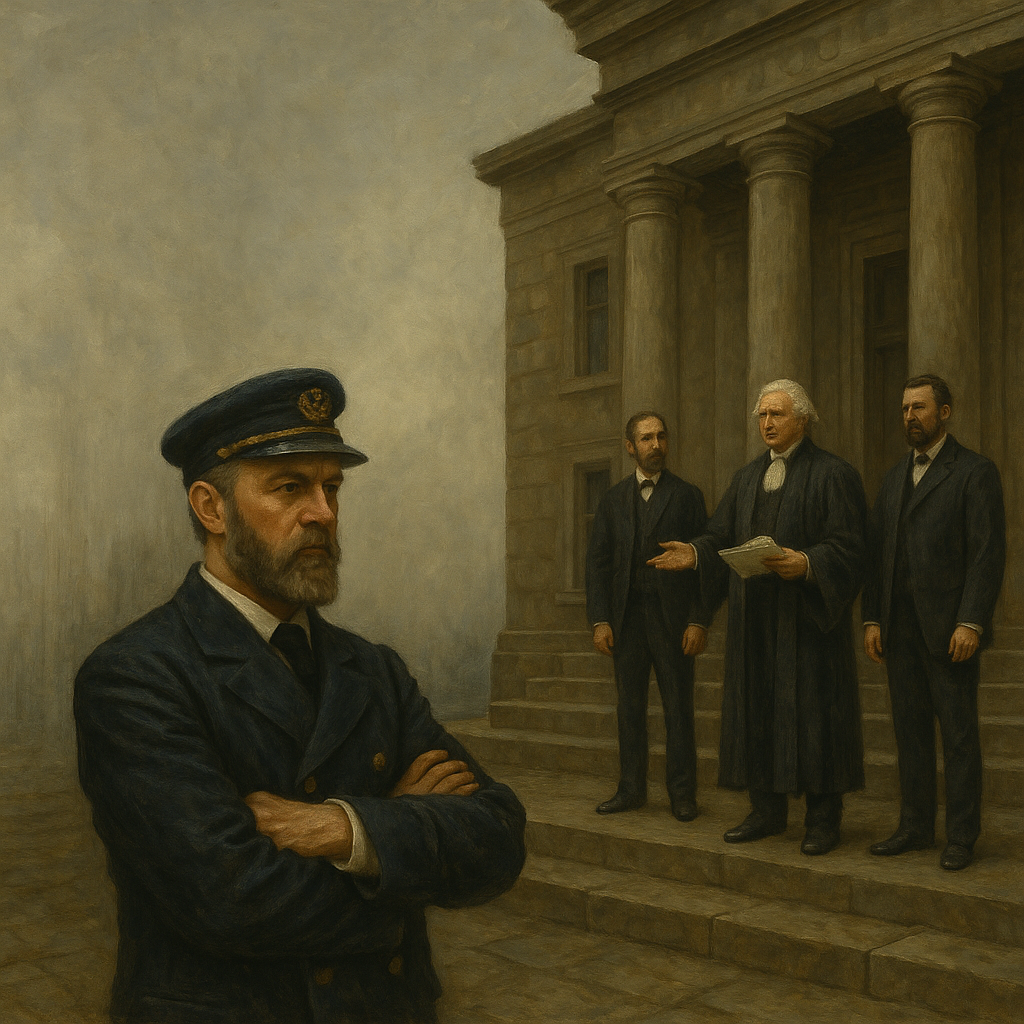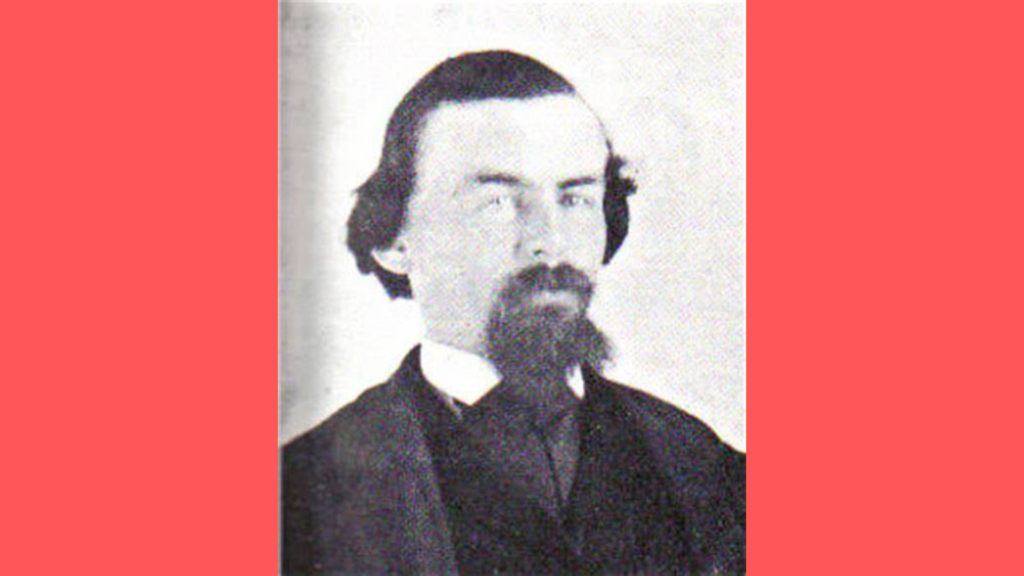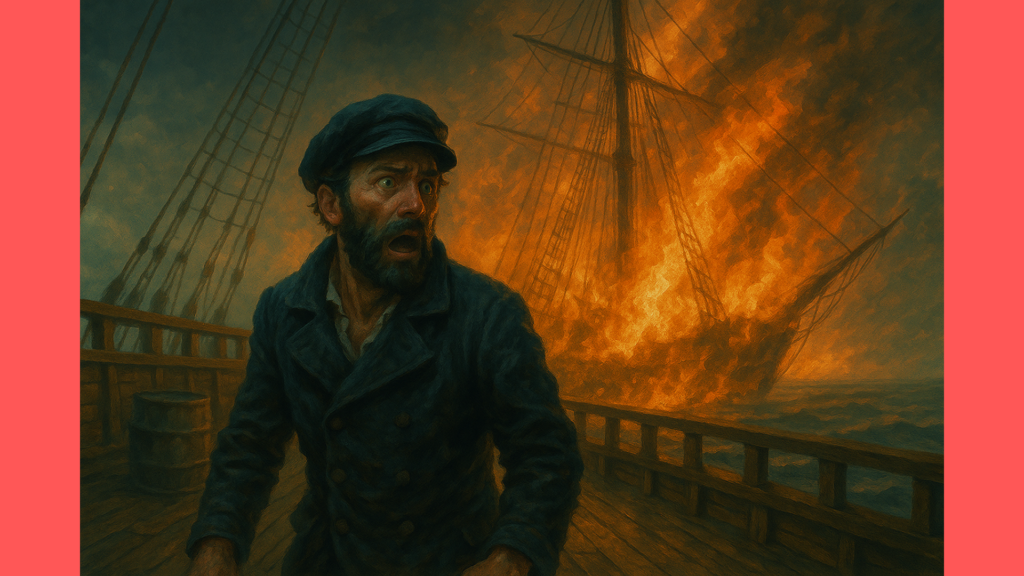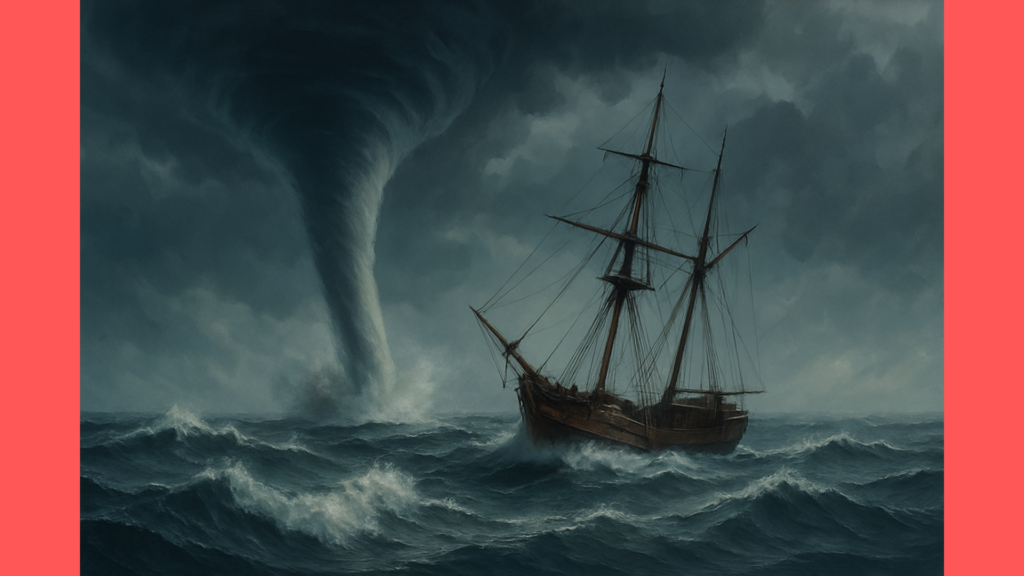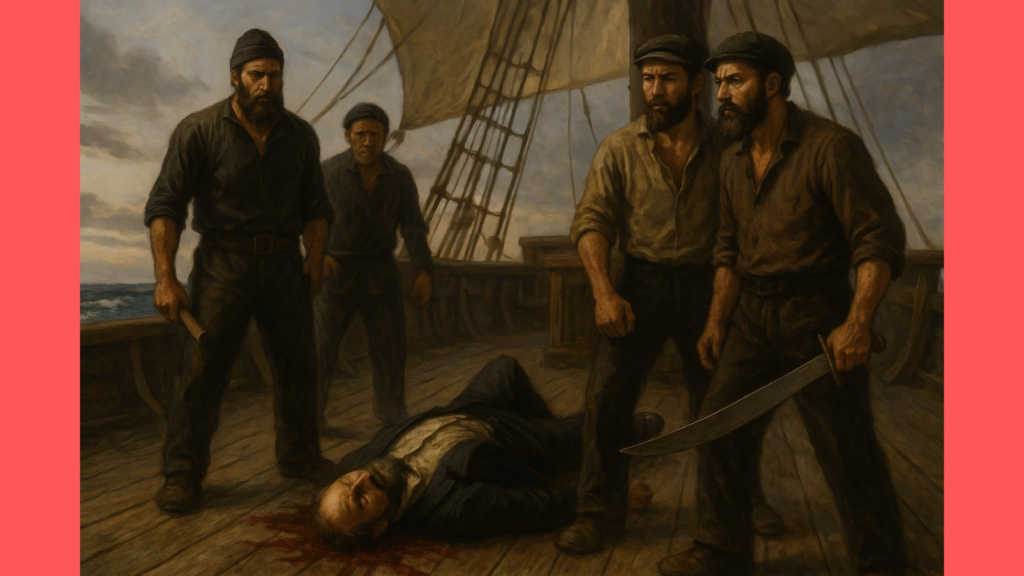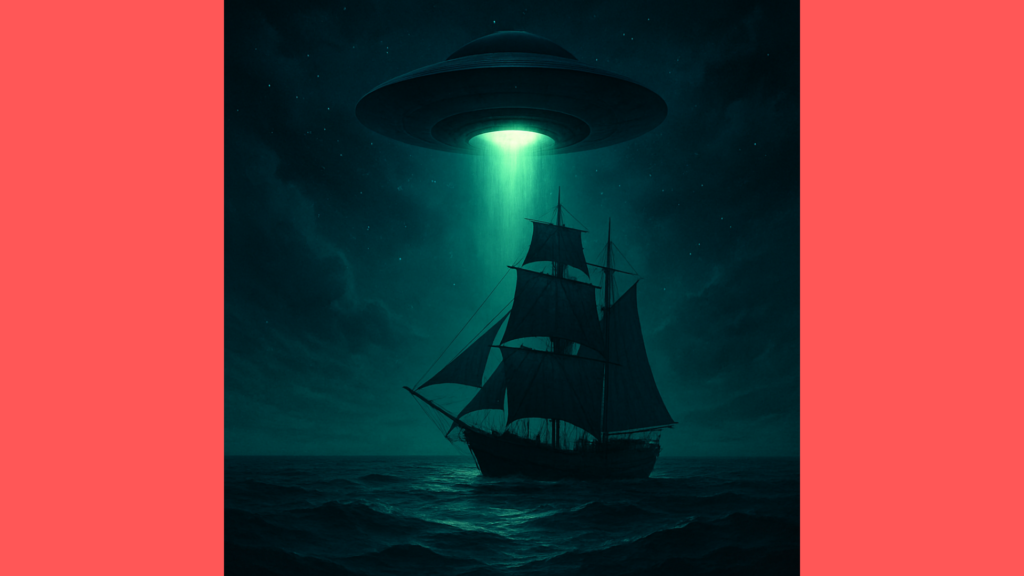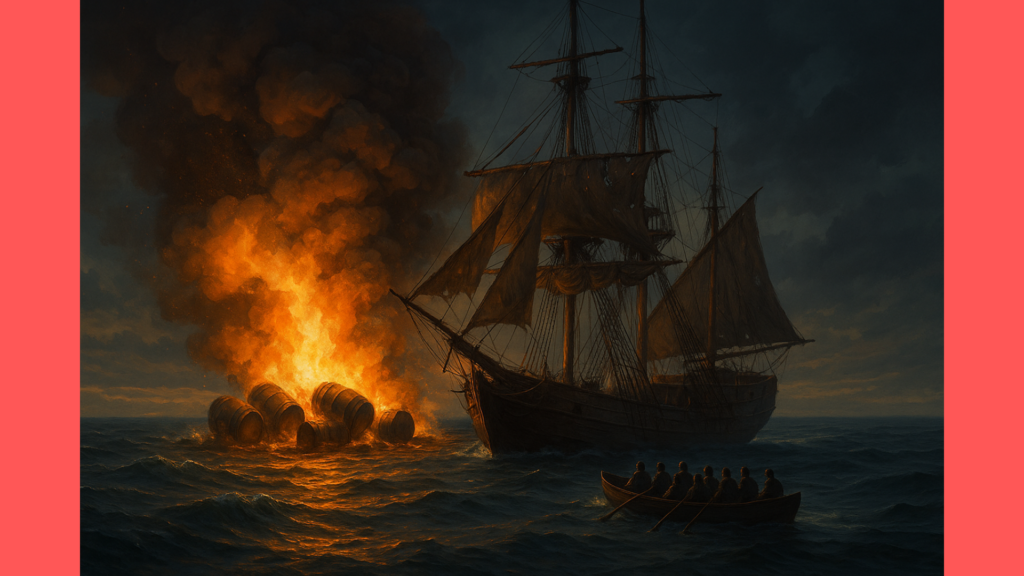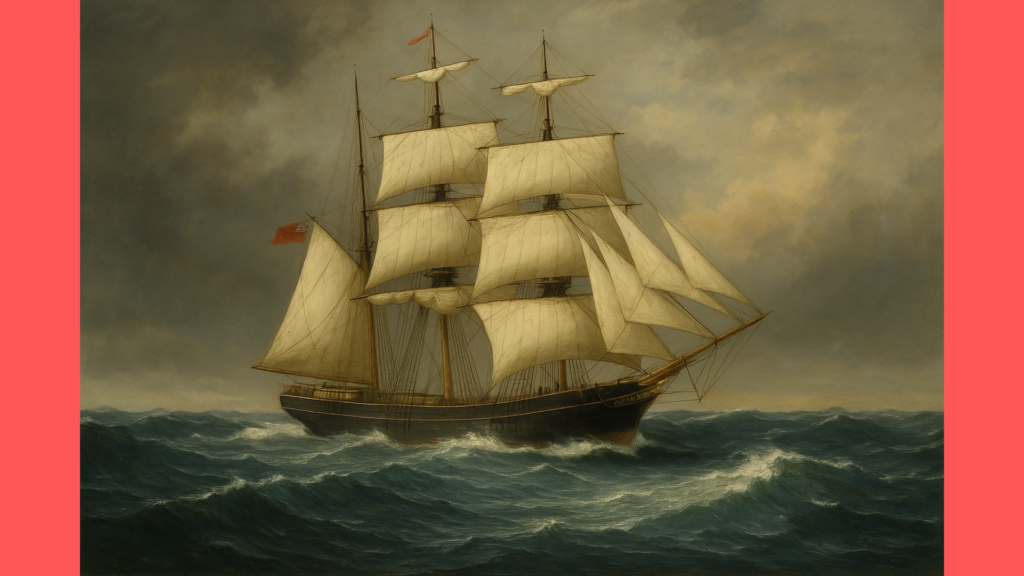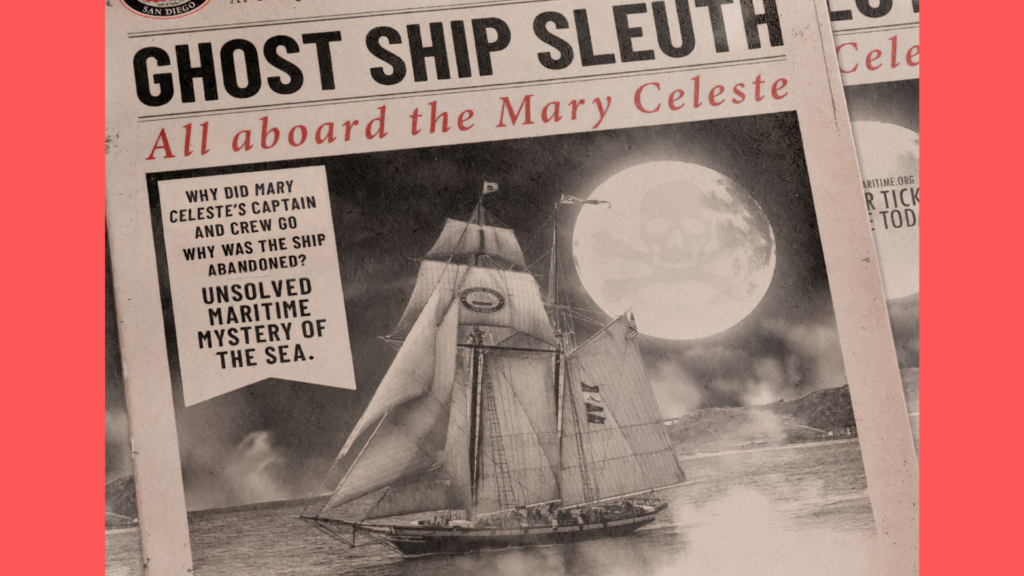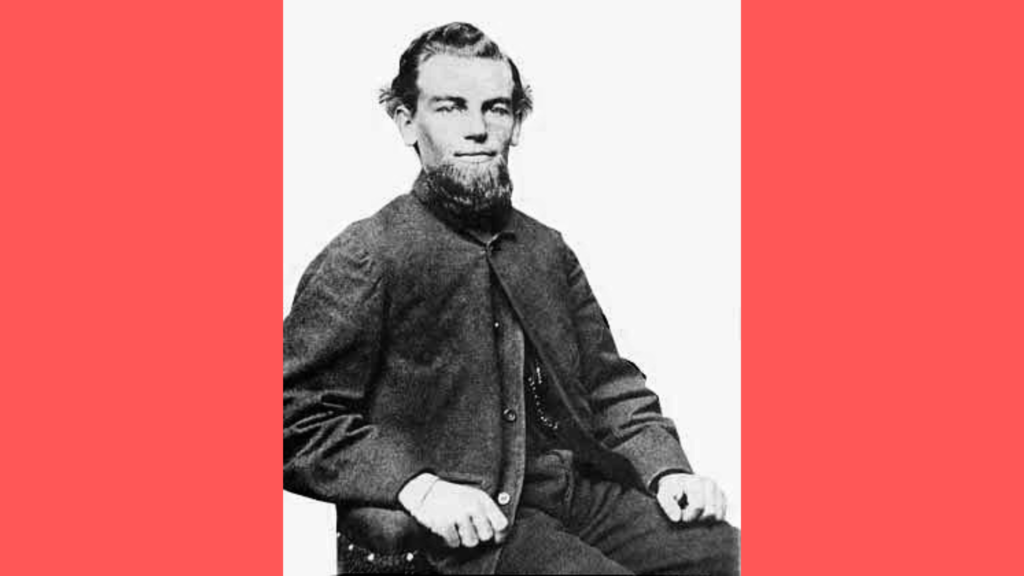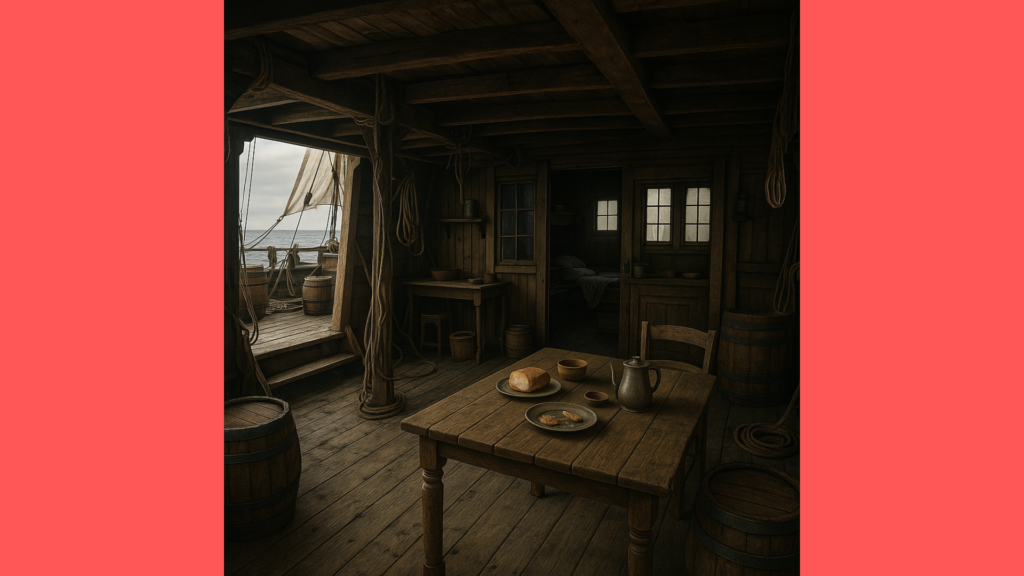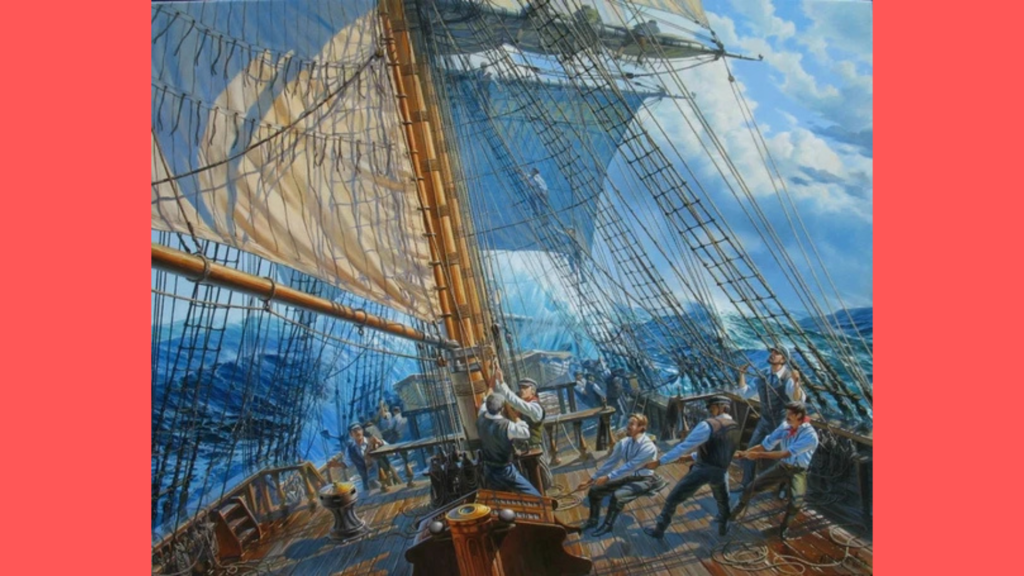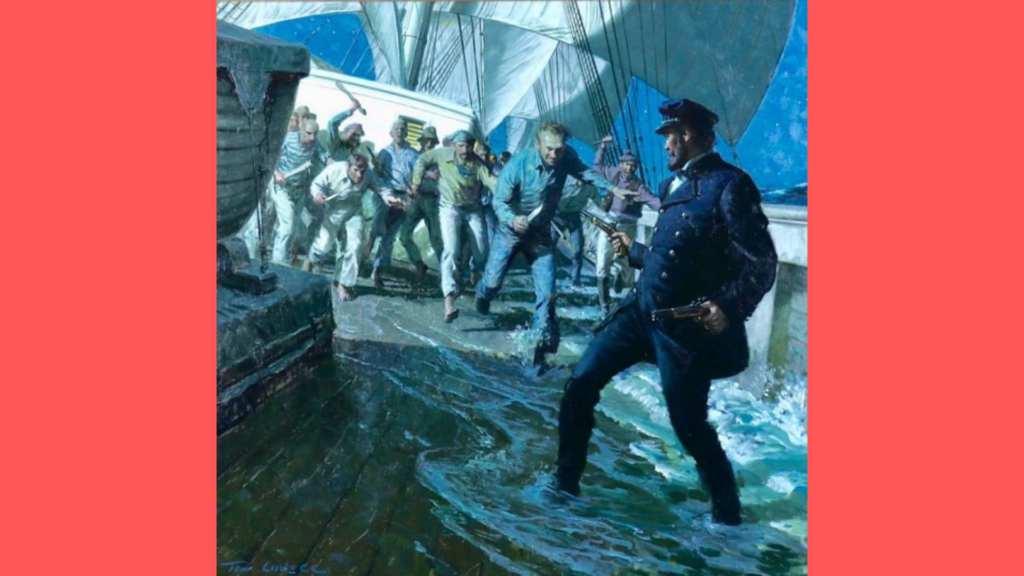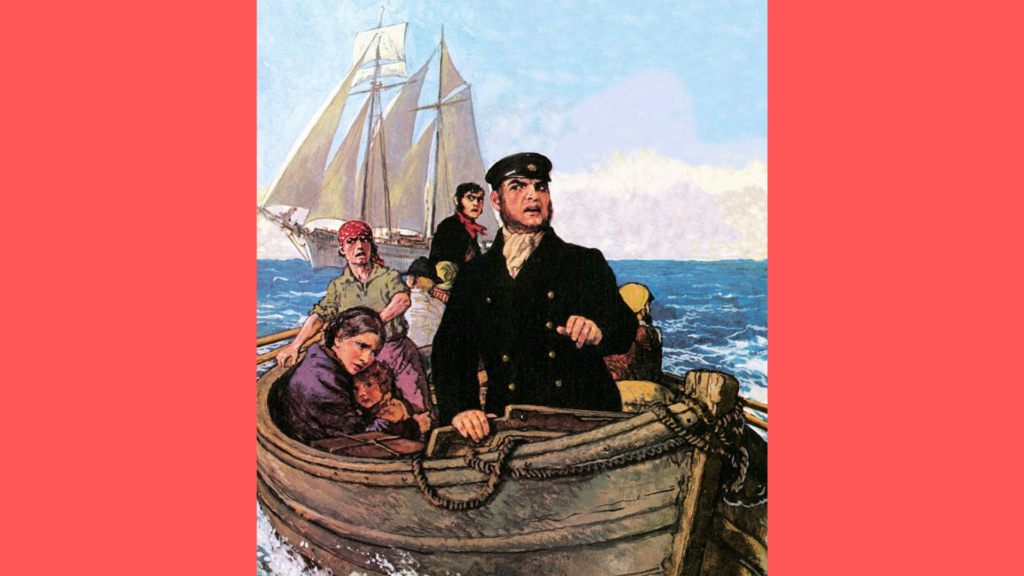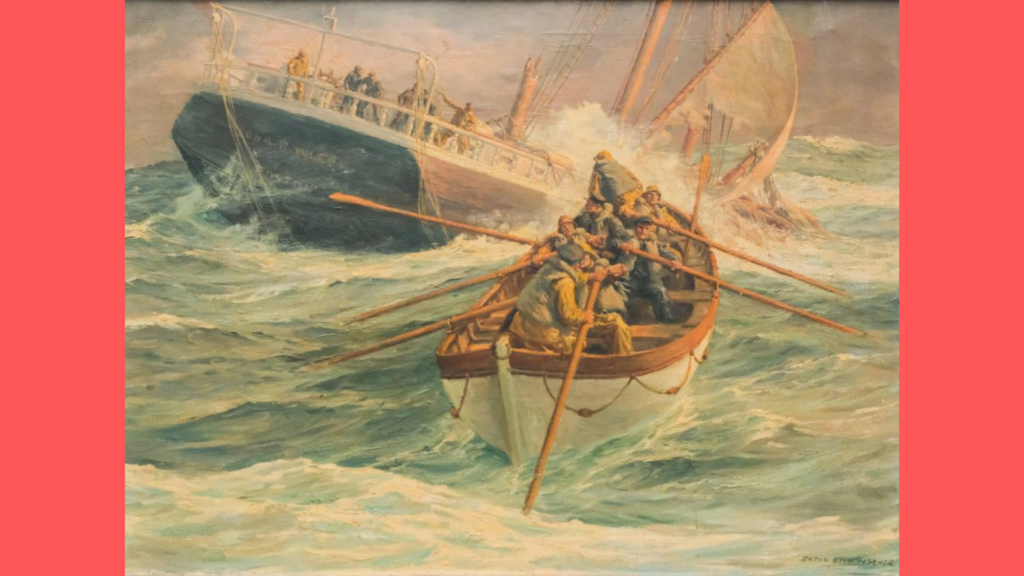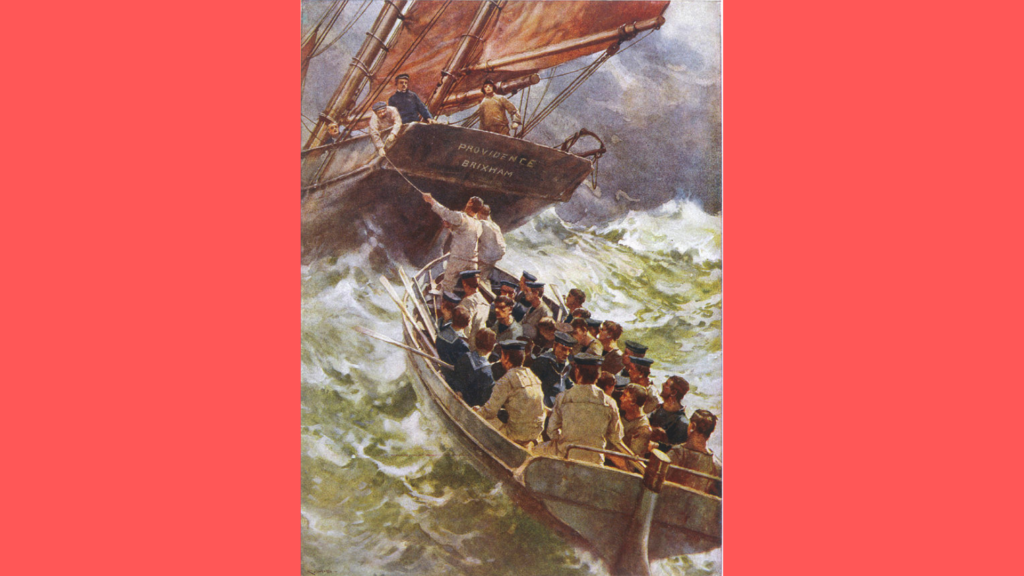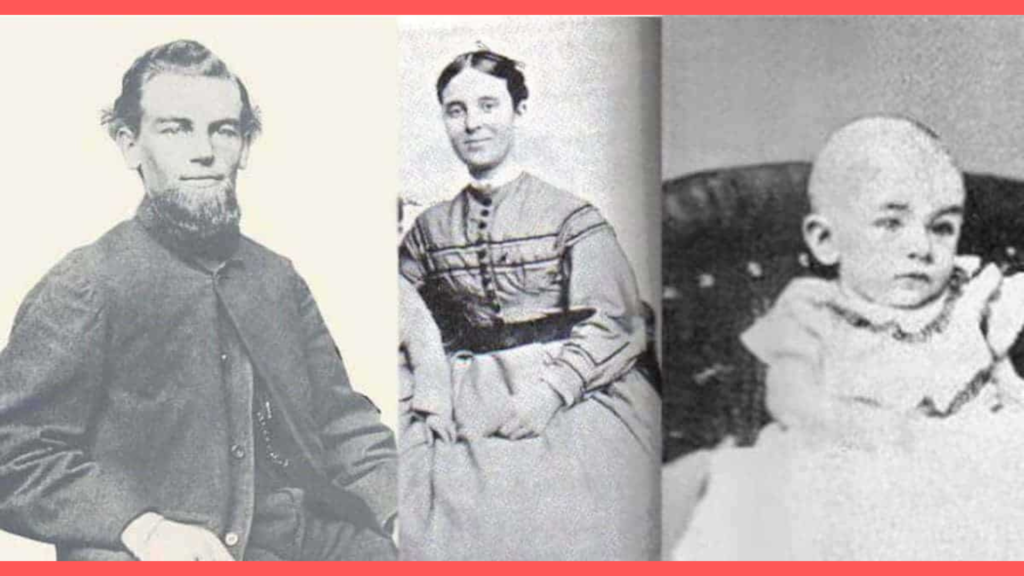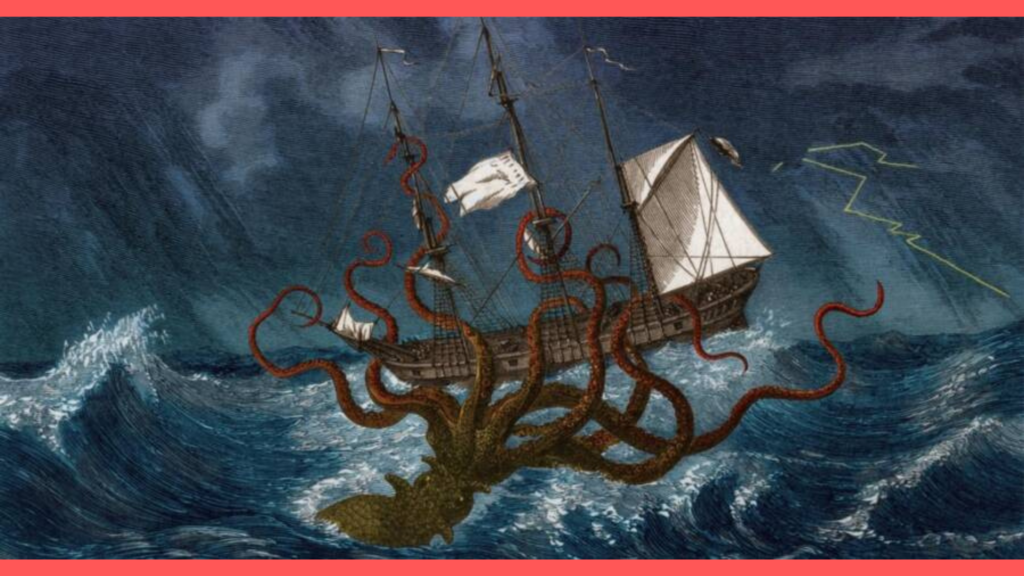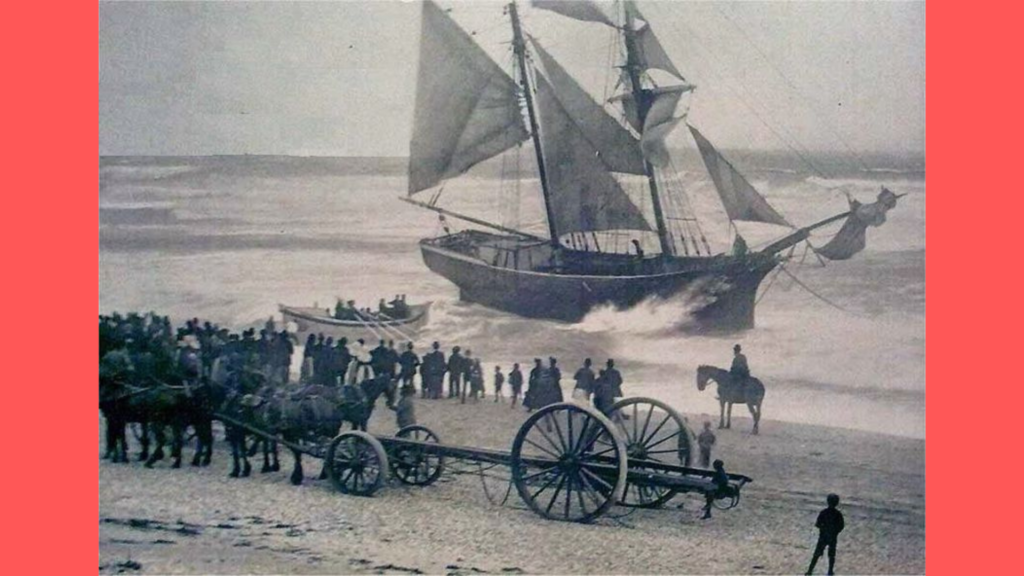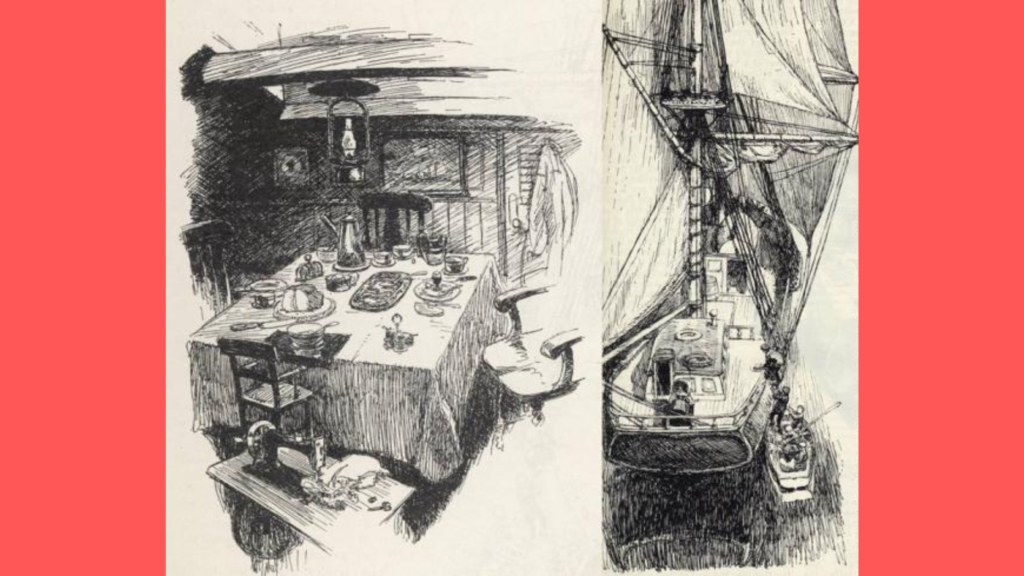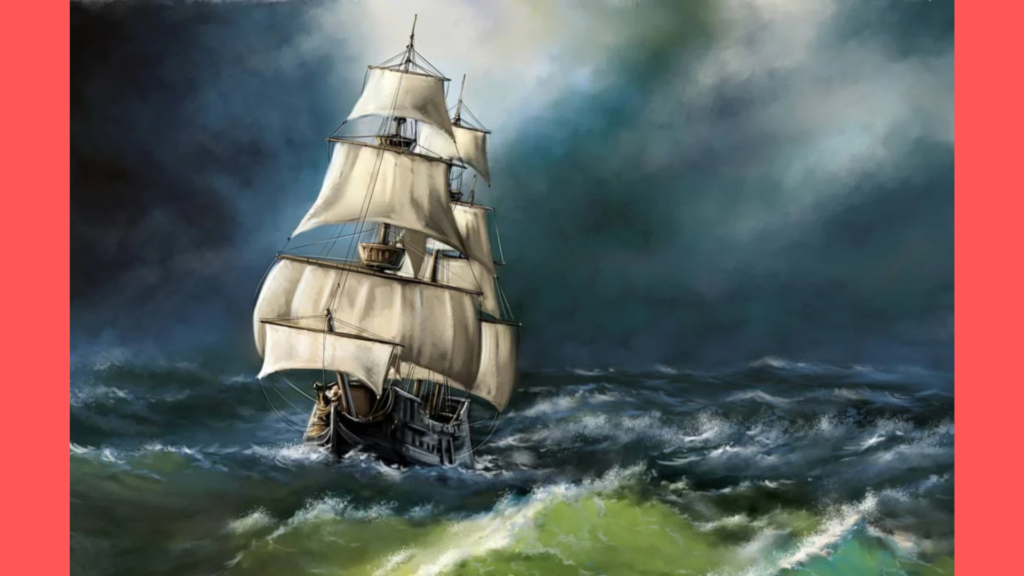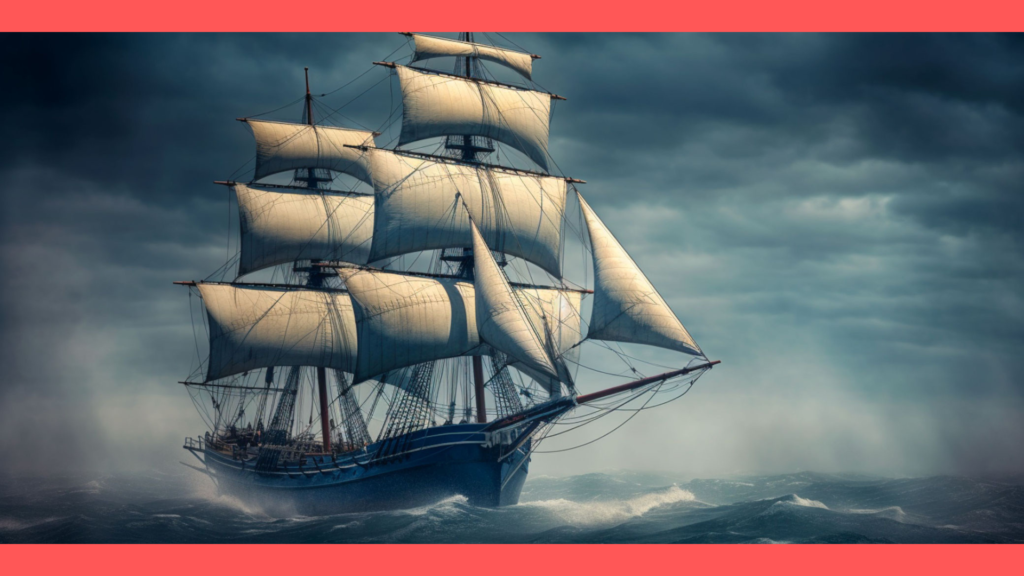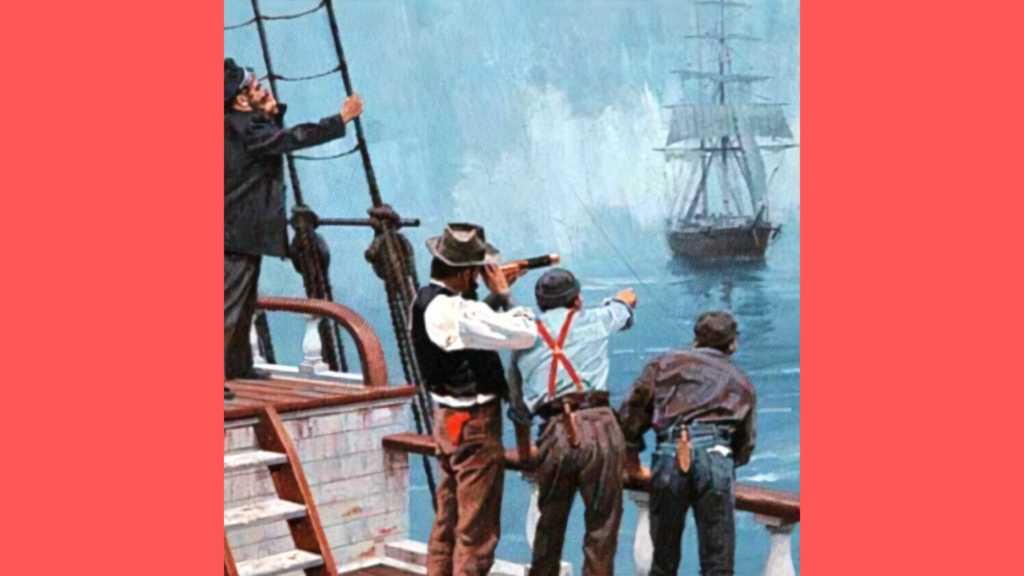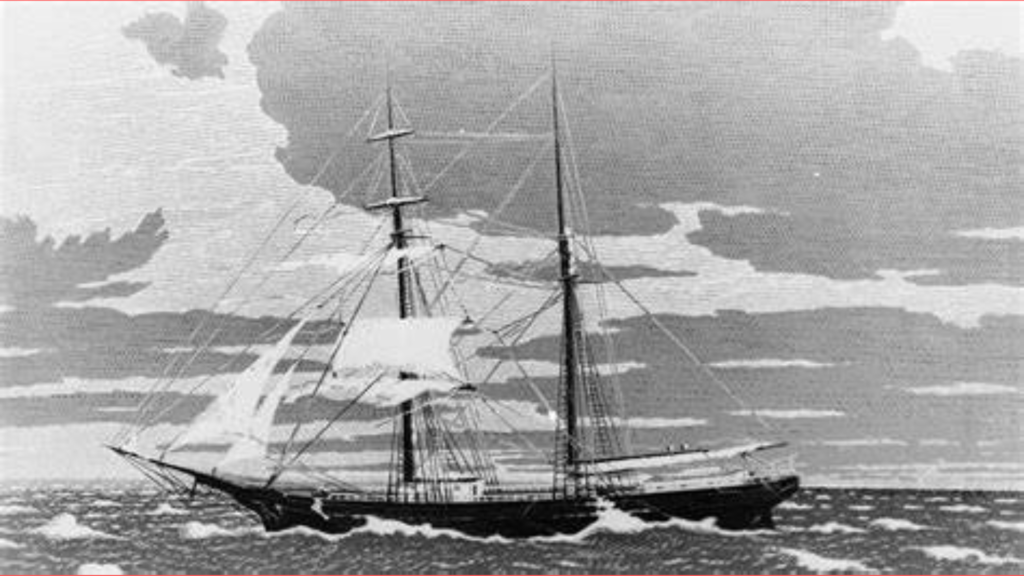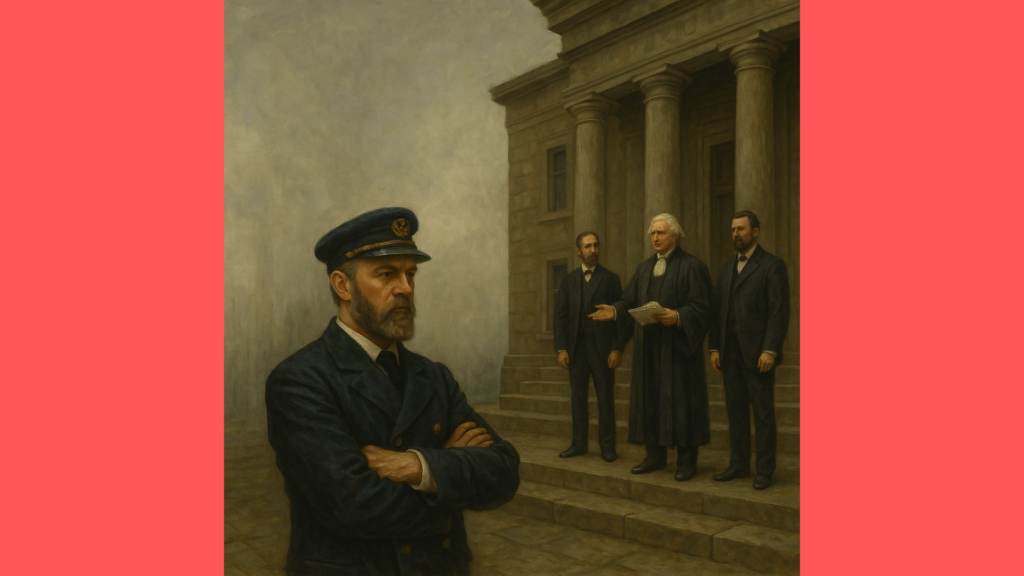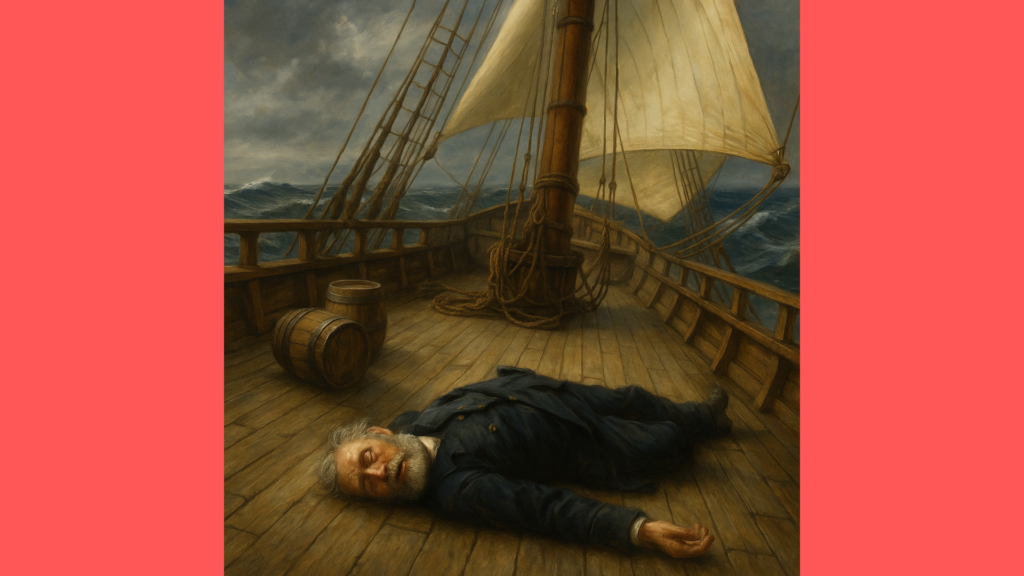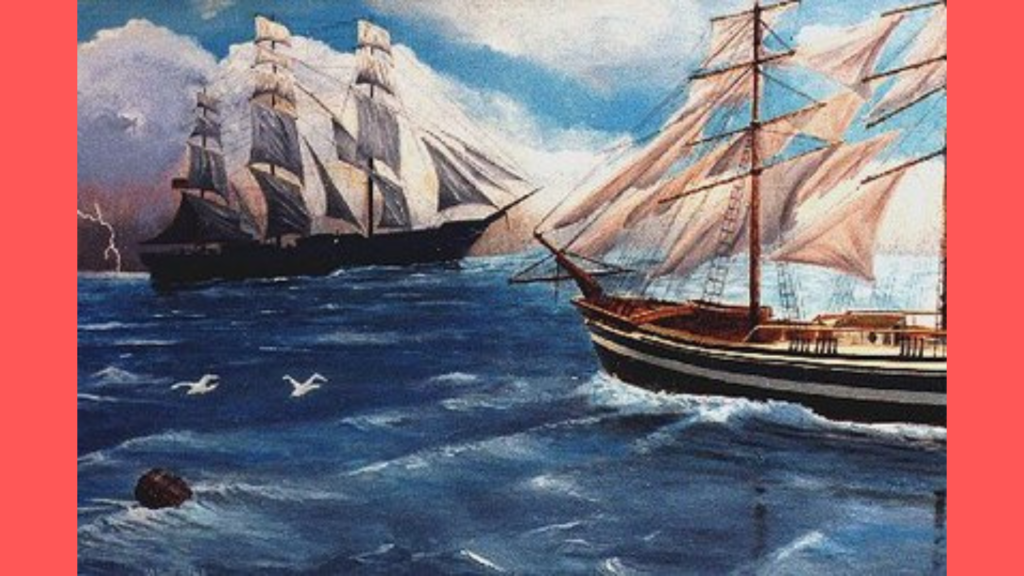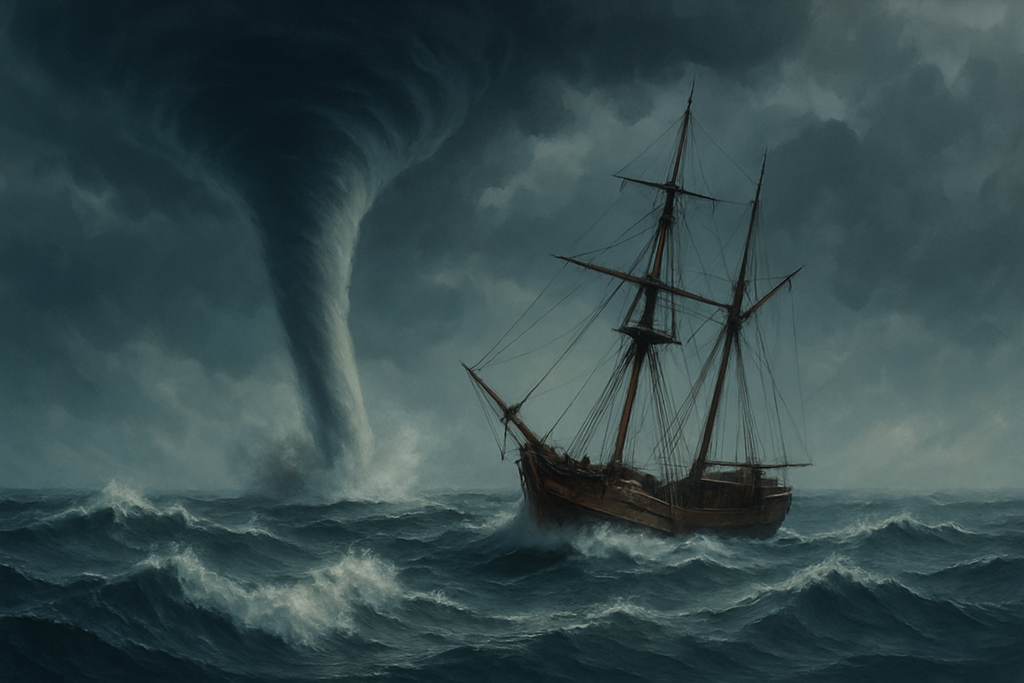
Introduction: A Ship Without a Crew
On December 4, 1872, sailors aboard the British brig Dei Gratia spotted a strange sight on the horizon— a ship drifting aimlessly in the Atlantic Ocean. The vessel was the Mary Celeste.
When they boarded, they found:
- No captain.
- No crew.
- No passengers.
- Food and water for six months still stored.
- Valuables untouched.
- Cargo largely intact.
- Only the lifeboat missing.
The Mary Celeste was perfectly seaworthy, but its people had vanished into thin air.
For over 150 years, historians, scientists, and storytellers have debated what happened. Was it mutiny, pirates, storms, alcohol vapors—or something beyond human explanation?
Let’s go deeper into the story than ever before.
1. The Origins of the Mary Celeste: Born Under a Dark Star
The ship that became infamous as the Mary Celeste began life in 1861, built in Spencer’s Island, Nova Scotia, under the name Amazon.
- First Captain’s Death: Captain Robert McLellan died of pneumonia during her maiden voyage.
- Collisions: She collided with fishing boats and struck another brig, Hawick, off the English coast.
- Grounding: In 1867, she ran aground in Cow Bay, badly damaged.
By 1869, she was bought by American investors including James Winchester, rebuilt in New York, and renamed the Mary Celeste.
🔍 Rare Detail: The rebuild increased her tonnage from 198 to 282, lengthened her hull, and made her more profitable for cargo runs. But seafarers whispered she was cursed, carrying “bad luck” from her Amazon days.
2. Captain Briggs: A Man of God, A Man of the Sea
Benjamin Spooner Briggs was a New Englander from a respected maritime family. At 37, he had command experience and a reputation for fairness and religious devotion.
- His Family: He brought his wife Sarah and 2-year-old daughter Sophia aboard. Their son Arthur stayed with relatives for schooling.
- His Character: He was deeply religious, reportedly reading scripture daily. Before the voyage, he even considered leaving the sea to become a minister.
- His Crew: Briggs handpicked seven men—loyal, sober, and skilled. His first mate, Albert Richardson, was himself a devout Christian.
✉️ Rare Detail: Surviving letters from Sarah describe her joy at joining Benjamin and her hopes of reaching Genoa safely. These letters, found later, hint at the family’s high spirits.
3. The Voyage: November 1872
The Mary Celeste departed New York on November 7, 1872, bound for Genoa, Italy.
- Cargo: 1,701 barrels of industrial alcohol, highly volatile.
- Provisions: Food and water for six months.
- Weather: Initial days saw strong winds and rough seas but nothing unusual.
Eight days later, the Dei Gratia, captained by David Morehouse (a personal friend of Briggs), also left New York for Europe.
Their fates would soon intertwine.
4. The Last Log Entries
The Mary Celeste’s logbook was recovered. The final entry was November 25, 1872:
- Location: Near the Azores Islands.
- Weather: Rough but manageable.
- Nothing unusual reported.
This means the ship was abandoned sometime between November 25 and December 4, when the Dei Gratia discovered her.
📖 Rare Detail: The last entry suggests the crew sighted land, probably Santa Maria in the Azores. If so, Briggs may have believed they were close to safety.
5. The Discovery: The Ghost Ship
On December 4, 1872, the Dei Gratia’s crew spotted the Mary Celeste drifting.
When they boarded, they found:
- No crew and the lifeboat missing.
- Rigging loose and sails partially set.
- 3.5 feet of water in the hold—serious but not deadly.
- Alcohol barrels leaking—nine were empty due to porous American oak.
- Navigation instruments gone—suggesting deliberate evacuation.
- Captain’s sword found under his bed, slightly rusted.
- Cabin belongings intact: Sarah’s sewing machine and harmonium, children’s toys, clothing.
It looked as if everyone had stepped out for a moment and never returned.
6. The Gibraltar Inquiry
The Mary Celeste was sailed to Gibraltar, where the British Vice Admiralty Court opened an inquiry.
- Attorney General Frederick Solly-Flood suspected foul play.
- He accused the Dei Gratia crew of piracy and murder.
- But evidence was lacking. No blood. No signs of struggle.
- The supposed “axe marks” on the hull were proven to be natural wear.
📜 Rare Detail from Transcripts: Solly-Flood wrote: “The case throws suspicion on all alike, but is a puzzle of puzzles, an enigma of enigmas.”
The inquiry concluded: the ship had been abandoned for reasons unknown.
7. The Theories
a) Alcohol Vapor Explosion (Most Believed)
- Nine leaking barrels produced flammable vapors.
- Briggs, fearing an explosion, ordered evacuation into the lifeboat.
- A spark may have triggered a pressure wave—loud but not destructive.
- The lifeboat’s tow rope likely snapped in rough seas, leaving the crew stranded.
🧪 Rare Detail: In 2006, scientists replicated this scenario. Alcohol vapors created explosive bursts without leaving scorch marks—matching the Mary Celeste’s intact state.
b) Waterspout or Rogue Wave
Could have dumped water into the hold, alarming Briggs.
c) Faulty Chronometer
Navigation error could have made Briggs believe they were near land, encouraging evacuation.
d) Mutiny or Piracy
No evidence. Valuables and cargo intact.
e) Disease or Poisoning
No records suggest illness.
f) Paranormal Theories
Sea monsters, alien abduction, or divine punishment. Though fanciful, they thrive because the mystery remains unsolved.
8. The Afterlife of the Mary Celeste
- After the inquiry, the ship returned to trade routes.
- In 1885, Captain Gilman Parker deliberately wrecked her on a reef near Haiti in an insurance fraud scheme.
- The fraud was exposed. Parker died bankrupt, one investor committed suicide, and others faced ruin.
This cemented her reputation as a cursed ship.
9. The Mary Celeste in Popular Culture
- Arthur Conan Doyle (1884): Wrote a fictionalized story, renaming it Marie Celeste. His tale invented false details, but shaped public imagination.
- Hollywood & Literature: From documentaries to ghost stories, the Mary Celeste remains a staple of mysterious tales.
- Symbolism: Today, “Mary Celeste” means any place found abandoned without explanation.
🎥 Rare Detail: In 1942, a low-budget Hollywood film called The Mystery of the Mary Celeste starred Bela Lugosi. It blended fact with horror, keeping the legend alive.
10. Dramatized Timeline: The Final Hours Aboard
- Nov 23: Crew detects alcohol fumes; some barrels leaking.
- Nov 24: Temperature rises, pressure builds in hold. Strange smells worsen.
- Nov 25 (Morning): A barrel bursts, releasing a blast of fumes. The crew panics. Briggs fears explosion.
- Nov 25 (Afternoon): Briggs orders lifeboat lowered, bringing charts, sextant, and chronometer. Plan: tow behind ship temporarily.
- Nov 25 (Evening): A squall hits. The lifeboat rope snaps. The Mary Celeste sails on, abandoned.
- Dec 4: The Dei Gratia finds her drifting silently.
11. Why the Mary Celeste Endures
The Mary Celeste isn’t just a maritime mystery—it’s a story of fear, fate, and the unknown. We know the facts, yet no theory fully fits. That gap between certainty and speculation is why the mystery never dies.
50 Unique FAQs About the Mary Celeste Mystery (1872)
1. Why did Captain Briggs decide to bring his wife and child on the Mary Celeste?
Because he expected a safe voyage. Briggs was cautious and pious, and bringing his family shows he believed the trip would be routine and secure.
2. What religious beliefs influenced Captain Briggs’ leadership?
Briggs was a devout Christian. His letters suggest he prayed daily with his crew and family, fostering discipline and morality aboard.
3. Why were American oak barrels more prone to leakage than European oak barrels?
American oak is more porous. This explains why nine barrels of alcohol leaked, possibly releasing dangerous vapors.
4. What rare cargo detail do historians often miss about the Mary Celeste?
Some barrels contained denatured alcohol, which evaporates faster and smells less obvious than wine or whiskey—making it harder for crew to judge the danger.
5. Did the ship have rats or vermin problems?
There’s no record of infestation, but wooden ships often carried rats, which may have chewed through casks, worsening leaks.
6. Why was the chronometer missing when the ship was found?
It suggests deliberate evacuation. Briggs likely took it to navigate from the lifeboat, meaning abandonment was planned, not rushed.
7. Was Captain Briggs known for being overly cautious?
Yes, he was known for strict discipline. Some suggest he abandoned ship prematurely out of excessive caution.
8. Did sailors believe the Mary Celeste was cursed before 1872?
Yes. Its history as the Amazon included accidents, fueling sailor superstition about “cursed” vessels.
9. Why did Captain Briggs refuse some crew applicants?
Historical records show he turned away men with reputations for drinking or violence, preferring a disciplined, sober crew.
10. How were women treated aboard merchant ships in 1872?
It was rare for wives to sail. Sarah Briggs’ presence suggests unusual trust in safety and family unity.
11. Why was the ship carrying alcohol instead of more common cargo like grain?
Industrial alcohol was highly profitable in Mediterranean trade routes, especially for wine and perfume production.
12. What condition was the captain’s cabin found in?
Orderly. Sarah’s sewing machine, harmonium, and children’s toys were untouched, as if the family had simply stepped away.
13. Why is the unsheathed sword under Briggs’ bed significant?
It may indicate Briggs anticipated trouble, or checked it before evacuation, but no signs of combat were found.
14. Could lightning have triggered alcohol vapors?
Yes. A single lightning strike or lantern spark could ignite fumes, causing loud blasts that left no burn marks.
15. What did the final log entry NOT mention that surprises historians?
It makes no mention of fear, damage, or cargo problems—showing how sudden the crisis must have been.
16. Was weather near the Azores unusually dangerous in late November 1872?
Meteorological records show storms were common, but nothing catastrophic was reported in that region on November 25.
17. Could the lifeboat have capsized immediately?
Yes. If towing behind in rough seas, a single wave could have overturned it, leaving no survivors.
18. Why do some believe Briggs thought land was closer?
The log’s final position shows he may have misread longitude, thinking he was closer to the Azores than he was.
19. Could Sarah’s presence have influenced Briggs’ decision?
Possibly. With his wife and daughter aboard, Briggs may have evacuated sooner than a captain with only male crew.
20. Why did newspapers in 1872 sensationalize the case?
Because the Victorian public loved mysteries. The press turned the story into a ghost-ship legend, ignoring dry maritime facts.
21. Why was the Gibraltar court so suspicious of the Dei Gratia crew?
Because salvaging an abandoned ship often meant a lucrative reward, giving motive for foul play.
22. Why did Solly-Flood misinterpret axe marks?
He assumed scuttling. Later inspections proved they were scratches from natural wear and repairs.
23. Did any crew of the Dei Gratia leave written testimony?
Yes. Crewmen testified the Mary Celeste looked seaworthy and deserted, but nothing sinister was found.
24. Did insurance companies pay for the cargo?
Yes, but only after months of investigation. The suspicion of fraud delayed settlement.
25. What happened to the cargo after the inquiry?
The alcohol was eventually delivered to Genoa, showing most barrels remained intact.
26. Why did Briggs’ family leave behind personal valuables?
Suggesting they expected to return quickly, abandoning ship only as a precaution.
27. Did Sarah Briggs’ letters mention fear of the sea?
No—her surviving letters describe calm optimism about the voyage.
28. How unusual was 3.5 feet of water in the hold?
Not life-threatening. Many ships carried pumps for exactly this situation, suggesting panic played a role.
29. Why does the missing ship’s clock matter?
Without it, celestial navigation would be nearly impossible, limiting survival chances at sea.
30. Could the Dei Gratia have misled authorities to hide their own role?
Some suggest this, but there’s no evidence they tampered with logs or altered the Mary Celeste.
31. Why was the Mary Celeste deliberately wrecked in 1885?
Her reputation made her unprofitable—no crew wanted to serve on a “cursed” ship, so owners scuttled her for insurance.
32. Why did Captain Gilman Parker die bankrupt after wrecking her?
His fraud was discovered, leaving him disgraced and financially ruined.
33. Why did one backer of the wreck scheme commit suicide?
It reinforced the myth of the Mary Celeste’s curse, linking deaths to the ship’s unlucky legacy.
34. Did sailors refuse to sail her after 1872?
Yes. Her reputation grew so dark that crews demanded extra pay or refused service entirely.
35. Was the wreck site near Haiti ever excavated?
No. The wreck decayed and disappeared, leaving little evidence behind.
36. Did any descendants of Briggs speak publicly about the case?
Yes. Family records preserve his letters, but no direct descendants claimed to know more about the disappearance.
37. Why did Conan Doyle’s story change the ship’s name?
He renamed it “Marie Celeste” for style, but his fictionalized tale confused fact with invention for decades.
38. Did Doyle’s story add false details?
Yes, including mutiny, racial conspiracy, and deliberate violence, none of which matched the real case.
39. Why did Doyle’s fiction overshadow fact?
Because it was published in a popular magazine, reaching far more readers than dry court transcripts.
40. How did 20th-century films reshape the legend?
They focused on ghostly abandonment, pirates, or supernatural forces—cementing the “haunted ship” image.
41. Could the Mary Celeste’s disappearance have inspired Bermuda Triangle myths?
Yes. Though outside the Triangle, her story became linked with unexplained maritime vanishings.
42. Why do modern researchers favor the alcohol theory?
Because experiments show vapor explosions can occur without burning marks, matching the Mary Celeste’s condition.
43. Could a medical emergency have caused abandonment?
No evidence of illness or poisoning was ever found, but it’s possible Briggs feared contamination of water supplies.
44. Did the crew’s nationalities play into suspicions?
Yes. Briggs’ mostly foreign-born crew fueled xenophobic rumors in British newspapers.
45. Why does the phrase “like the Mary Celeste” still exist?
It became shorthand for any house, shop, or place found eerily deserted.
46. Did Briggs leave behind a will?
Yes, his family records show he had financial plans in case of loss, which fueled rumors he expected disaster.
47. Could the crew have been rescued by another ship?
Possible, but no other vessel reported saving them, and no survivors ever appeared.
48. Why is the Mary Celeste often compared to the Flying Dutchman?
Because both became maritime legends—one a ghostly myth, the other a real ship with a ghostly fate.
49. Did weather logs from nearby ships mention storms?
No significant storms were reported in that area between Nov 25–Dec 4, deepening the mystery.
50. Why will the Mary Celeste never truly be solved?
Because the Atlantic swallowed all human evidence. Without survivors or wreckage of the lifeboat, we are left with only theories.
Conclusion: The Ship That Will Never Be Solved
The Mary Celeste remains history’s greatest ghost ship mystery. Not because we lack theories—but because every theory leaves holes.
- Why would a cautious captain abandon a seaworthy ship?
- Why take the lifeboat but leave provisions?
- Why has no evidence of the crew ever surfaced?
The Atlantic Ocean holds her secret. And until that secret is revealed, the Mary Celeste will drift forever—not across the waves, but through human imagination.




